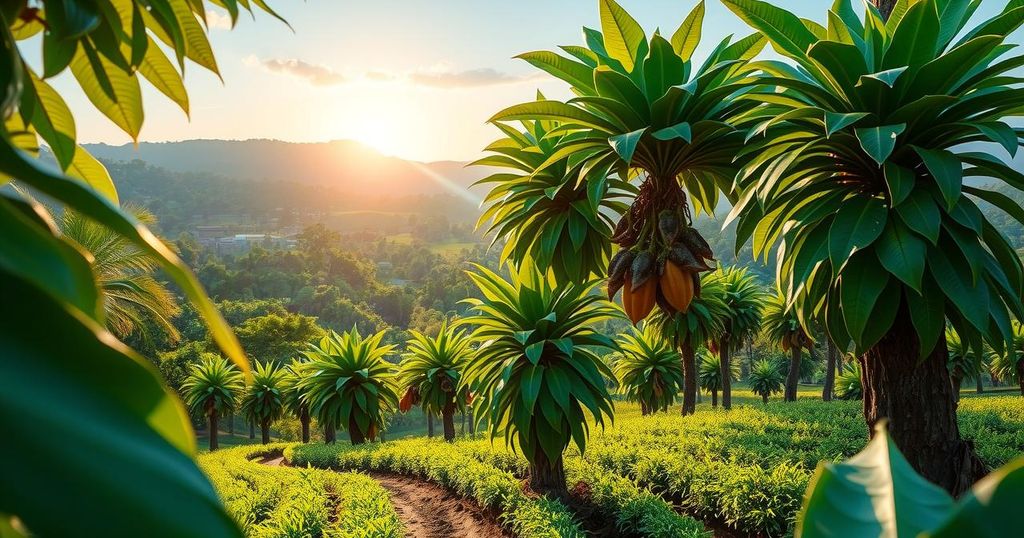Indonesia’s Cocoa Farmers Collaborate to Combat Climate Change Challenges

Cocoa farmers in Indonesia are collaborating with businesses to mitigate the effects of climate change and volatile prices. Enhanced agricultural practices and cooperative financing initiatives are helping farmers improve productivity and sustainability. Despite challenges such as limited access to loans and competition from other crops, there remains potential for revitalizing cocoa farming through continued partnerships.
In Indonesia, cocoa farmers are taking proactive measures to combat the detrimental effects of climate change. They are collaborating with businesses and organizations to tackle issues stemming from rising cocoa prices, which have surged to record highs due to environmental strains and underinvestment. Cocoa cultivation is complex and labor-intensive, as these trees thrive only near the equator, requiring a specific climate to flourish.
The adverse effects of climate change manifest in hotter temperatures and longer rainy seasons, which jeopardize yields and facilitate the proliferation of pests and diseases. Consequently, many farmers are diversifying their crops, further exacerbating the cocoa supply shortage and inflating prices, which reached approximately US$12,000 per ton in 2024. In response, some chocolatiers are exploring laboratory-grown cocoa.
Indonesia ranks as the third largest cocoa producer globally, governed by the challenges posed by climate and market forces. Farmers like Tari Santoso, based in South Sumatra, are adopting enhanced agricultural techniques in partnership with companies like Krakakoa. Since 2016, Santoso has been trained in effective farming practices such as pruning, grafting, and utilizing organic fertilizers, which have resulted in improved productivity.
Krakakoa has trained over 1,000 farmers in Indonesia, providing necessary financial backing. The formation of a cooperative enables farmers to access low-interest loans, reinvesting interest earnings within their community. Collaborations with businesses also facilitate access to larger loans through guaranteed buyer agreements, bolstering farmers’ ability to sustain and expand operations.
Comprehensive efforts are underway across various sectors, involving governmental agencies, NGOs, and cooperatives that collectively support cocoa farmers confronting climate challenges. A noteworthy collaboration between Indonesia’s National Research and Innovation Agency and Mars has led to a high-yield cocoa variant, addressing productivity concerns.
Despite these initiatives, obstacles persist in persuading new generations to pursue cocoa farming, with many opting for more lucrative crops such as palm oil. Furthermore, access to loans remains limited for many small-scale farmers. Nonetheless, there is a hopeful outlook for continued collaboration to make cocoa farming more attractive. Rajendra Aryal from the FAO asserts that addressing the fundamental challenges facing farmers could revitalize interest in cocoa cultivation.
In conclusion, Indonesian cocoa farmers are actively engaging with businesses and organizations to navigate the complexities posed by climate change and the volatile cocoa market. Through enhanced agricultural practices, collaborative financing, and innovative partnerships, they are rebuilding their livelihoods. While challenges persist, the concerted efforts of various stakeholders may provide promising pathways for the future of cocoa farming in Indonesia.
Original Source: www.local10.com






